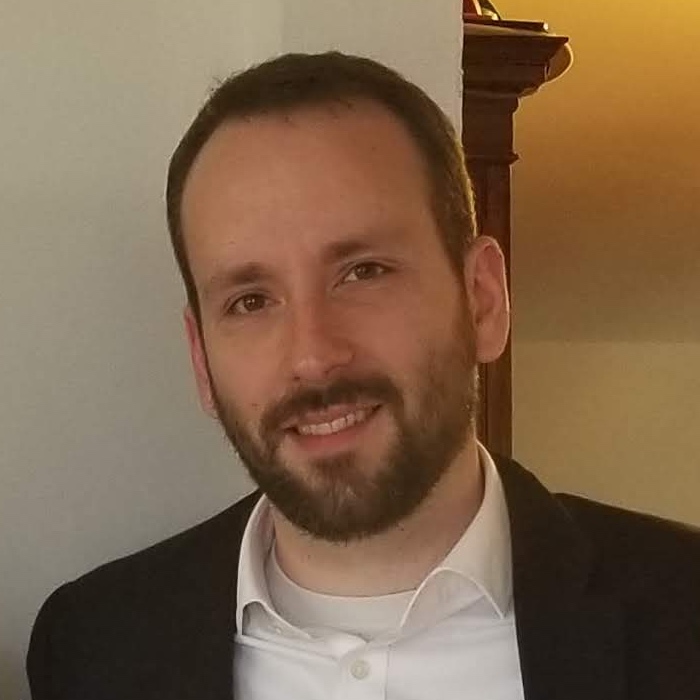| Num |
Date |
Class Content |
| 1 |
Mon, 1/13/ 2020
| Course Organization and What is "User Interface Software", Overview of UI Software and Tools
Slides for Lecture 1
Required Readings:
- Brad A. Myers. "Graphical User Interface Programming," chapter 48 of Computer Science Handbook -- Second Edition. Allen B. Tucker, editor in
chief. Boca Raton, FL: Chapman & Hall/CRC Press, Inc., 2004. pp. 48-1 -
48-29. pdf
(This is a revision of Brad A. Myers. "User Interface Software
Tools," ACM Transactions on Computer-Human Interaction. vol. 2, no. 1,
March, 1995. pp. 64-103. ACM DL Reference)
- Brad A. Myers, Scott Hudson and Randy Pausch. "Past Present and Future
of User Interface Software Tools," ACM Transactions on Computer
Human Interaction, (Mar. 2000). Volume 7, Issue 1. pp. 3-28. ACM DL Reference.
Start on Homework 1 - Editor
|
| 2 |
Wed, 1/15/ 2020
|
Why are user interfaces hard to design and implement?
Slides for Lecture 2
Required Readings:
- Brad A. Myers. "Challenges of HCI Design and Implementation," ACM
Interactions. vol. 1, no. 1. January, 1994. pp. 73-83. ACM
DL
Discusses why user interfaces are important, and why they are hard to
design and implement.
- Brad A. Myers. "A Brief History of Human Computer Interaction Technology." ACM interactions. Vol. 5, no. 2, March, 1998. pp. 44-54. ACM
DL
Amusing Reading:
- Tyson R. Henry, Scott E. Hudson, Andrey K. Yeatts, Brad A. Myers and Steven
Feiner; "A nose gesture interface device: extending virtual
realities," Proceedings of the fourth annual ACM symposium on User interface software and technology,
UIST'1991, Pages 65 - 68. ACM
DL or local copy.
|
| X |
Mon, 1/20/ 2020
| Martin Luther King Day; No Classes |
| 3 |
Wed, 1/22/ 2020
| Basic Computer Graphics
Slides for Lecture 3
Required Readings:
- New Foley & van Dam, pp. 25-40, 52-60
- old Foley & van Dam, pp. 132-134 (color maps)
- These are combined into
one pdf (link only works from CMU or with VPN, but also available on Canvas under Course Content)
|
| 4 |
Mon, 1/27/ 2020
| Other Output Models: Structured Graphics; Object-Oriented Techniques; Hints for HW2
Slides for Lecture 4
Required Readings:
- Brad A. Myers, Richard G. McDaniel, Robert C. Miller, Alan Ferrency,
Andrew Faulring, Bruce D. Kyle, Andrew Mickish, Alex Klimovitski, and
Patrick Doane. "The Amulet Environment: New Models for Effective User
Interface Software Development", IEEE Transactions on Software
Engineering, Vol. 23, no. 6. June, 1997. pp. 347-365. local pdf or IEEE
Explore Ref.
- David S. Kosbie, Brad Vander Zanden, Brad A. Myers, Dario Giuse. "Automatic Graphical Output Management", in Brad A. Myers, editor. The Garnet Compendium: Collected Papers,
1989-1990. Carnegie Mellon University School of Computer Science Technical
Report, no. CMU-CS-90-154, August, 1990. pp. 30-43. pdf.
Optional Readings:
- Brad A. Myers, Dario A. Giuse, and Brad Vander Zanden. "Declarative
Programming in a Prototype-Instance System: Object-Oriented
Programming Without Writing Methods," Proceedings OOPSLA'92: ACM
Conference on Object-Oriented Programming Systems, Languages, and
Applications. October 18-22, 1992. Vancouver, BC, Canada. SIGPLAN
Notices, vol. 27, no. 10. pp. 184-200. ACM DL Reference.
Course add Deadline.
Turn in Homework 1.
Start on Homework 2 - Output
|
| 5 |
Wed, 1/29/ 2020
|
Design and Evaluation of APIs and UI Tools, API Usability, Cognitive Dimensions
Slides for Lecture 5
Required Readings:
- Brad A. Myers, Andrew J. Ko, Thomas D. LaToza, and YoungSeok Yoon. "Programmers Are Users Too: Human-Centered Methods for Improving Programming Tools," IEEE Computer, Special issue on UI Design, 49, issue 7, July, 2016, pp. 44-52. IEEE DL or local pdf.
- Brad A. Myers and Jeffrey Stylos, "Improving API Usability", Communications of the ACM, vol 59, No. 6, June, 2016, pp. 62-69,
 Official ACM DL entry; html or local pdf. Official ACM DL entry; html or local pdf.
- Jakob Nielsen, Heuristic Evaluation. On line in html format. Includes list of 10 heuristics.
- Green, T.R.G. and Petre, M., “Usability Analysis of
Visual Programming Environments: A 'Cognitive Dimensions' Framework.” Journal of Visual Languages and Computing, 1996. 7(2): pp.
131-174. ScienceDirect.
Includes an analysis of HyperCard
Recommended Readings:
- Jeffrey Stylos and Brad Myers, "Mapping the Space of API Design
Decisions," 2007 IEEE Symposium on Visual Languages and
Human-Centric Computing, VL/HCC'07. Sept 23-27, 2007, Coeur
d'Alene, Idaho. pp. 50-57. ieee or local pdf
- Brian Ellis, Jeffrey Stylos, and Brad Myers. "The Factory
Pattern in API Design: A Usability Evaluation". International
Conference on Software Engineering (ICSE'2007). May 20-26, 2007.
Minneapolis, MN. pp. 302-312. ACM DL or local pdf
- Clarke, Steve, “Measuring API Usability.” Dr. Dobb's
Journal; Special Windows/.NET Supplement, May, 2004. pp. S6-S9.
html
- Jeffrey Stylos, Brad A. Myers. "The Implications of Method
Placement on API Learnability," Sixteenth ACM SIGSOFT Symposium
on Foundations of Software Engineering (FSE 2008). Atlanta, GA,
November 9-14, 2008. 105-112. ACM DL or local pdf
- Jeffrey Stylos and Steven Clarke. "Usability Implications of
Requiring Parameters in Objects' Constructors". International
Conference on Software Engineering (ICSE 2007). May 20-26,
2007. Minneapolis, MN. pp. 529-539. ACM DL or local pdf
- T.R.G. Green, Cognitive Dimensions of Notations. Cognitive
Dimensions of Notations Resource Site
- Matthew Conway, et. al., "Alice: lessons learned from building a 3D system for novices", CHI'2000. pp. 486-493. ACM DL or see this html summary.
Alice was informed by many user studies over the years.
|
| 6 |
Mon, 2/3/ 2020
| Constraints 1
Slides for Lecture 6
Required Readings:
- Brad Vander Zanden, Brad A. Myers, Dario Giuse and Pedro Szekely. "Integrating
Pointer Variables into One-Way Constraint Models," ACM Transactions on
Computer-Human Interaction. vol. 1, no. 2, June, 1994. pp. 161-213. ACM
DL Reference
- Brad Vander Zanden, "An Incremental Algorithm for Satisfying Hierarchies
of Multi-way, Dataflow Constraints", ACM Transactions on Programming Languages
and Systems, 18(1), January, 1996. pp. 30-72. ACM
DL Reference
|
| 7 |
Wed, 2/5/ 2020
|
Constraints 2 - Guest Lecture by Scott Hudson
Slides for Lecture 7
Required Readings:
- Scott E. Hudson. "Incremental attribute evaluation: a flexible algorithm for lazy update," ACM Transactions on Programming Languages and Systems, Volume 13 , Issue 3 (1991), Pages 315-341. ACM
DL Reference
- Bjorn N. Freeman-Benson, John Maloney and Alan Borning. "An incremental constraint solver," Communications of the ACM . Volume 33 , Issue 1 (1990). Pages 54-63. ACM
DL Reference
Optional Readings:
- Scott E. Hudson, Ian Smith, "Ultra-lightweight constraints", UIST'1996. pp.
147 - 155. ACM
DL Reference
|
| 8 |
Mon, 2/10/ 2020
| UI Software Models: Lexical-Syntax-Semantics, Seeheim Model, MVC, Design Patterns
Slides for Lecture 8
Required Readings:
- William Buxton, "Lexical and Pragmatic Considerations of Input
Structures," Computer Graphics, January, 1983, (17)1, pp. 31-37. (lexical,
syntactic, semantic, etc.). html
- Glenn Krasner and Stephen T. Pope, "A Cookbook for Using the
Model-View-Controller User Interface Paradigm in Smalltalk-80", Journal of Object-Oriented Programming (JOOP). August-September,
1988. vol. 1, no. 3. pp. 26-49. pdf scan at UCI
Optional Readings:
- Mark Green, "Report on Dialogue Specification Tools," User
Interface Management Systems, G. Pfaff, ed. Berlin: Springer-Verlag,
1985. pp. 9-20. (Seeheim model)
(Here is a pdf scan of the
book chapter, but it is not generally available on the web)
|
| 9 |
Wed, 2/12/ 2020
| Toolkits Organizations: callbacks, resources, widget hierarchies, geometry management
Slides for Lecture 9
Optional Readings.
Turn in Homework 2.
Start on Homework 3 - Constraints
|
| 10 |
Mon, 2/17/ 2020
|
Historical Perspectives: Menu trees, Transition Networks, Grammars, Event Languages, HyperTalk, Declarative Languages
Slides for Lecture 10
Required Readings:
- Mark Green, "A Survey of Three Dialogue Models," ACM Transactions on Graphics (5)3, Jul, 1986, pp 244-275. ACM
DL Reference
- chapter 10 from Olsen's book: "Editing Dialog Models". User Interface Management Systems: Models
and Algorithms.Morgan Kaufmann; (November 1991) (pdf
of the chapter, but this is not generally available on the web),
or Amazon listing for book.
Optional readings:
- Robert J.K. Jacob, "A Specification Language for Direct Manipulation
Interfaces," ACM Transactions on Graphics, Oct, 1986, vol. 5, no.
4, pp. 283-317. ACM
DL Reference.
- Philip J. Hayes, Pedro A. Szekely, and Richard A. Lerner, "Design Alternatives
for User Interface Management Systems Based on Experience with COUSIN", Proceedings SIGCHI'85: Human Factors in Computing Systems, San Francisco,
CA, Apr, 1985, pp. 169-175. ACM DL Reference. ACM
DL Reference
|
| 11 |
Wed, 2/19/ 2020
|
Model-based tools: Creating the UI Automatically
Slides for Lecture 11
Required Readings:
- Dan R. Olsen, Jr., "A Programming Language Basis for User Interface
Management," Proceedings SIGCHI'89, Austin, TX, Apr, 1989, pp. 171-176. ACM
DL Reference
- Jeffrey Nichols, Brad A. Myers, Michael Higgins, Joe
Hughes, Thomas K. Harris, Roni Rosenfeld, Mathilde Pignol. "Generating
Remote Control Interfaces for Complex Appliances." CHI Letters: ACM Symposium on User Interface Software and
Technology, UIST'02, 27-30 Oct. 2002, Paris, France. pp. 161-170. pdf
Optional Readings:
- Brad Vander Zanden and Brad A. Myers, "Automatic, Look-and-Feel
Independent Dialog Creation for Graphical User Interfaces," Proceedings SIGCHI'90: Human Factors in Computing Systems.
Seattle, WA, April 1-5, 1990. pp. 27-34. ACM DL Reference
- Pedro Szekely, Ping Luo, and Robert Neches, "Beyond Interface
Builders: Model-Based Interface Tools, Proceedings INTERCHI'93:
Human Factors in Computing Systems. Amsterdam, The Netherlands,
April 24-29, 1993. pp. 383-390. ACM DL Reference.
- Paterno, F., Mancini, C. & Meniconi, S. (1997), "ConcurTaskTrees: A
Diagrammatic Notation for Specifying Task Models," in Proceedings of
Interact-97, Sydney, Australia, pp.362-369.
pdf
- S. R. Ponnekanti, B. Lee, A. Fox, P. Hanrahan and T.Winograd.
“ICrafter: A service framework for ubiquitous computing environments,” UBICOMP 2001, Atlanta, Georgia, 2001. pp. 56-75. URL
- K. Gajos, Weld, D. “SUPPLE: Automatically Generating User Interfaces,”
IUI'04: Intelligent User Interfaces, Funchal, Portugal, 2004. pp.
93-100. pdf. See also the video.
- Jeffrey Nichols, Duen Horng Chau, Brad A. Myers, "Demonstrating the
Viability of Automatically Generated User Interfaces" Proceedings
CHI'2007: Human Factors in Computing Systems. San Jose, CA,
April 28 - May 3, 2007. pp. 1283-1292. pdf
|
| 12 |
Mon, 2/24/ 2020
| Conventional Input Models for Window Managers and Toolkits
Slides for Lecture 12
|
| 13 |
Wed, 2/26/ 2020
|
Declarative input models: Garnet & Amulet "Interactor" and "Command" Objects & Support for Undo
Slides for Lecture 13
Required Readings:
- Brad A. Myers. "A New Model for Handling Input," ACM Transactions
on Information Systems, vol. 8, No. 3. July, 1990. pp. 289-320. ACM DL Reference.
- Brad A. Myers and David Kosbie. "Reusable Hierarchical Command
Objects," Proceedings CHI'96: Human Factors in Computing Systems.
Vancouver, BC, Canada. April 14-18, 1996. ACM DL Reference
- Brad A. Myers. "Scripting Graphical Applications by Demonstration," Proceedings CHI'98: Human Factors in Computing Systems. Los
Angeles, CA, April 18-23, 1998. pp. 534-541. ACM DL Reference and local pdf and video. (Topaz)
|
| 14 |
Mon, 3/2/ 2020
|
Interactive Tools: Prototypers (HyperCard, Director, Visual Basic, Balsamiq), Interface Builders, Sketching Tools
Slides for Lecture 14
Required Readings:
- James Landay and Brad A. Myers. "Interactive Sketching for the Early Stages
of User Interface Design," Proceedings CHI'95: Human Factors in Computing
Systems. Denver, CO. May, 1995. pp. 43-50. (html) or ACM
DL Ref
- Brad A. Myers. "Separating Application Code from Toolkits: Eliminating
the Spaghetti of Call-Backs," ACM Symposium on User Interface Software
and Technology: UIST'91, Hilton Head, SC, Nov. 11-13, 1991. pp. 211-220. ACM
DL Reference
Optional Readings:
- James Lin, Michael Thomsen, and James A. Landay, "A Visual Language for Sketching Large and
Complex Interactive Designs." In CHI Letters: Human Factors in Computing Systems, CHI
2002, 2002. 4(1): pp. 307-314. ACM
DL Ref
See also the DENIM
Video (better version of video in a temporary place), (longer video, no sound)
- Walker, M., Takayama, L., and Landay, J. (2002) High-fidelity or low-fidelity, paper or computer
medium? Proceedings of the Human Factors and Ergonomics Society 46th Annual Meeting (in press).
PDF
- James A. Landay and Brad A. Myers. Just Draw It! Programming by Sketching
Storyboards. Carnegie Mellon University School of Computer Science
Technical Report, no. CMU-CS-95-199 and Human Computer Interaction Institute
Technical Report CMU-HCII-95-106. November, 1995. html or PDF
Turn in Homework 3.
Start on Homework 4 - Input
|
| 15 |
Wed, 3/4/ 2020
| Demonstrational Tools
Slides for Lecture 15
Required Readings:
- Brad A. Myers, Richard G. McDaniel, and David S. Kosbie. "Marquise: Creating
Complete User Interfaces by Demonstration," Proceedings INTERCHI'93: Human
Factors in Computing Systems. Amsterdam, The Netherlands, April 24-29,
1993. pp. 293-300. ACM
DL Reference. (pdf)
- Toby Jia-Jun Li, Marissa Radensky, Justin Jia, Kirielle Singarajah, Tom Mitchell, Brad Myers. "PUMICE: A Multi-Modal Agent that Learns Concepts and Conditionals from Natural Language and Demonstrations," ACM Symposium on User Interface Software and Technology, UIST'19, New Orleans, LA, October 20-23, 2019. pp. 577-589. ACM DL and local pdf
- Brad Myers, Richard McDaniel and David Wolber. "Programming by example:
Intelligence in Demonstrational Interfaces," Communications of the ACM. March, 2000. vol. 43, no.
3. pp. 82-89. ACM
DL Reference. (pdf)
Optional Readings:
- Richard G. McDaniel and Brad A. Myers, "Getting More Out Of
Programming-By-Demonstration." Proceedings CHI'99: Human Factors in Computing
Systems. Pittsburgh, PA, May 15-20, 1999. pp. 442-449. (Gamut) ACM
DL Reference. (pdf)
- Brad A. Myers. "Creating User Interfaces Using Programming-by-Example, Visual
Programming, and Constraints," ACM Transactions on Programming Languages
and Systems. vol. 12, no. 2, April, 1990. pp. 143-177. (Peridot) ACM
DL Reference
- Brad A. Myers, Brad Vander Zanden, and Roger B. Dannenberg. "Creating Graphical
Interactive Application Objects by Demonstration," ACM Symposium on User
Interface Software and Technology: UIST'89, Williamsburg, VA, Nov. 13-15,
1989. pp. 95-104. (Lapidary) ACM
DL Reference. (see also the video excerpt)
|
| X |
Mon, 3/9/ 2020
| Spring Break, no classes
Mid semester grades due.
|
| X |
Wed, 3/11/ 2020
| Spring Break, no classes |
| X |
Mon, 3/16/ 2020
|
CLASS CANCELLED due to Covid-19
|
| 16 |
Wed, 3/18/ 2020
|
Component Techniques: Andrew, OLE, OpenDoc, Java Beans, Web Services, Micro-services
All classes in the second half, starting March 18, will be done using Zoom, through the link shown on Canvas.
Slides for Lecture 16
Link for video of lecture (on Canvas — class use only)
Required Readings:
- Andrew J. Palay, Fred Hansen, Mike Kazar, Mark Sherman, Maria Wadlow, Thomas
Neuendorffer, Zalman Stern, Miles Bader, and Thom Peters. "The Andrew Toolkit
- An Overview", Published in Proceedings USENIX Technical Conference,
Winter 1988. Reproduced as ITC Technical Report 061. pdf
Optional Readings:
Turn in Homework 4 - extended deadline
Start on Homework 5 - Widgets
|
| 17 |
Mon, 3/23/ 2020
|

ConstraintJS and InterState - Guest Lecture by Stephen Oney
Slides for Lecture 17
Link for video of lecture (on Canvas — class use only)
Stephen Oney is a Assistant Professor in the University of Michigan School of Information. He received his PhD from the HCII at CMU in 2015, advised by Brad Myers. This thesis topics included the ConstraintJS and InterState user interface development tools. His current research focuses on enabling and encouraging more people to write and customize computer programs by creating new programming tools and exploring usability issues in programming environments.
Required Readings:
- Stephen Oney, Brad A. Myers, Joel Brandt, "ConstraintJS: Programming Interactive Behaviors
for the Web by Integrating Constraints and States", UIST'2012: ACM Symposium on User
Interface Software and Technology, October 7-10, 2012. Cambridge,
MA. pp. 229-238. ACM DL or local pdf
- Stephen Oney, Brad A. Myers, and Joel Brandt, "InterState: A Language and Environment for Expressing Interface Behavior", ACM Symposium on User Interface Software and Technology, UIST'14, October 5-8, 2014, Honolulu, Hawaii. pp. 263-272. ACM DL, pdf, video, project Page.
|
| 18 |
Wed, 3/25/ 2020
|
Simple User Interface Toolkits and EUP for UIs
Slides for Lecture 18
Link for video of lecture (on Canvas — class use only)
Required Readings:
- Pausch, R., Conway, M., & DeLine, R. (1992). Lesson Learned from SUIT, the Simple User Interface Toolkit. ACM Transactions on Information Systems, 10(4), 320-344. ACM DL Ref, or citeseer ref
- Conway, M., Audia, S., Burnette, T., Cosgrove, D., Christiansen, K., Deline, R., et al. (2000, Apr 1-6). Alice: Lessons Learned from Building a 3D System For Novices. Paper presented at the Proceedings of CHI 2000, The Hague, The Netherlands. ACM DL Ref, or citeseer ref
- J.F. Pane, B.A. Myers, and L.B. Miller, "Using HCI Techniques to Design a More Usable Programming System," 2002 IEEE Symposia on Human Centric Computing Languages and Environments (HCC'2002). Arlington, VA, September 3-6, 2002. pp. 198-206. local pdf. (Winner Most Influential Paper Award for important influences on VL/HCC research or commerce over the last 10+/-1 years in 2012.)
Optional Readings:
- Repenning, A & Ioannidou, A. (2004) Agent-based end-user development. Communications of the ACM, 47(9), pp. 43-46. ACM DL Ref
- Anders I. Mørch., Stevens, G., et al. (2004) Component-based technologies for end-user development. Communications of the ACM, 47(9), pp. 59-62. ACM DL Ref
- Scratch, Yahoo! pipes, Vegemite
- Brad A. Myers, John F. Pane and Andy Ko, "Natural Programming Languages and Environments". Communications of the ACM. 47(9), pp. 47-52. ACM DL Ref
- Fabio Casati: How End-User Development Will Save Composition Technologies from Their Continuing Failures. IS-EUD 2011: 4-6. SpringerLink
Turn in Homework 4 - extended deadline
|
| 19 |
Mon, 3/30/ 2020
|
 Guest lecture about Flutter: Hans Muller and Dan Field from Google Guest lecture about Flutter: Hans Muller and Dan Field from Google
Hans Muller's bio:
Hans is the manager of the Flutter framework team and has been working on the project since it was just a crazy idea. Before the Flutter project Hans worked on Chrome at Google and Adobe, and before that he was the tech lead for the Java Swing GUI toolkit at Sun. Earlier at Sun, Hans built the LispView GUI toolkit for CommonLisp, which was included in a toolkit survey conducted by one Brad Myers. Hans graduated from CMU in 1982.
Dan Field's bio:
 I'm a software engineer at Google working on the Flutter team. I've worked on platform specific embedding and tooling, core Flutter framework areas such as scrolling and image rendering, as well as build infrastructure, testing, and continuous integration. Before working on Flutter, I worked on mobile and desktop application development, web/front-end development, as well as healthcare data integration (OLTP and OLAP). I'm a software engineer at Google working on the Flutter team. I've worked on platform specific embedding and tooling, core Flutter framework areas such as scrolling and image rendering, as well as build infrastructure, testing, and continuous integration. Before working on Flutter, I worked on mobile and desktop application development, web/front-end development, as well as healthcare data integration (OLTP and OLAP).
Slides for Lecture 19 (Google Slides): part 1 and
part 2, and local copy (pdf)
Video of the presentation (publically accessible with permission)
Required Readings:
Optional Readings:
*Sorry the video in the second part only shows me instead of Dan!
3/31: Withdrawal deadline - postponed until April 6.
|
| 20 |
Wed, 4/1/ 2020
|
Animation in Toolkits
Slides for Lecture 20
Link for video of lecture (on Canvas — class use only)
Required Readings:
- Bay-Wei Chang and David Ungar. “Animation: From Cartoons to the User Interface,” UIST'93: ACM SIGGRAPH Symposium on User Interface Software and Technology, Atlanta, GA, Nov, 1993. pp. 45-55. ACM DL Reference
- Brad A. Myers, Robert C. Miller, Rich McDaniel, and Alan Ferrency, "Easily
Adding Animations to Interfaces Using Constraints." ACM Symposium on User
Interface Software and Technology, UIST'96, November 6-8, 1996. Seattle,
WA. pp. 119-128. ACM
DL Reference
|
| 21 |
Mon, 4/6/ 2020
|
Guest lecture about Unity, a leading 3D toolkit and game engine, by Adam Mechtley and Damian Campeanu: "A tale of three UI frameworks: A decade of evolving developer and designer workflows in a game engine"
Talk Summary:
Over its 15-year lifetime, the Unity game engine has implemented three different UI frameworks. Each framework aimed to address the needs of game developers at different historical moments in time. In this lecture, we will discuss the evolution of these frameworks, highlighting unique advantages and disadvantages, technical details, and requirements that influenced the designs of each one.
 Adam Mechtley's bio: Adam Mechtley's bio:
I have worked in the games industry since 2004, and am currently a lead software developer at Unity Technologies focused on physics, animation rigging, and data-oriented design. My professional work has focused on developer tools, usability, first-time user experience, and software development craftsmanship. I am also trained as a learning scientist, and hold a PhD from the University of Wisconsin–Madison focused on design, informal, and creative education. My academic work has focused on design-based research related to epistemic cognition, argumentation, and learning in science- and engineering-based computer and board games. I am based in Copenhagen, Denmark.
Damian Campeanu's bio:
 I'm mostly a C++ and C# desktop application and games developer with 10+ years of professional experience, primarily focusing on 3D content creation tools, developer tools, API design, and risky live product demos.
I implemented a broad-use C API called Houdini Engine, wrapping the C++ procedural geometry, animation, and special effects core of Houdini, by SideFX. Eating my own dog-food, I developed a feature-rich open-source C# Houdini plugin for Unity using Houdini Engine.
At the moment, I am the primary developer on a visual UI Builder for Unity's new UI Toolkit (formally UIElements). Previously at Unity, I worked on the UI Toolkit C# API and I've given several live product demos and talks at Unity's yearly Unite conferences and various events on both the UI Builder and UI Toolkit.
I continue my passion for software development at home with an on-going game (engine) project called Synekism since 2010, written in modern C++, with use of CMake, Clang, SDL2, and Vulkan, and with support for Windows, Linux, and macOS. I'm mostly a C++ and C# desktop application and games developer with 10+ years of professional experience, primarily focusing on 3D content creation tools, developer tools, API design, and risky live product demos.
I implemented a broad-use C API called Houdini Engine, wrapping the C++ procedural geometry, animation, and special effects core of Houdini, by SideFX. Eating my own dog-food, I developed a feature-rich open-source C# Houdini plugin for Unity using Houdini Engine.
At the moment, I am the primary developer on a visual UI Builder for Unity's new UI Toolkit (formally UIElements). Previously at Unity, I worked on the UI Toolkit C# API and I've given several live product demos and talks at Unity's yearly Unite conferences and various events on both the UI Builder and UI Toolkit.
I continue my passion for software development at home with an on-going game (engine) project called Synekism since 2010, written in modern C++, with use of CMake, Clang, SDL2, and Vulkan, and with support for Windows, Linux, and macOS.
Google Slides for Lecture 21 and local pdf copy
Video of the presentation (publically accessible with permission)
Required Readings:
- Richard Fine, "Going deep with IMGUI and Editor Customization", December 22, 2015, blog post -- discusses the event loop for Unity's old immediate-mode GUI system
- J. Blow, “Game development: Harder Than You Think”, ACM Queue, ACM, New York, 2004, pp. 29-37. ACM DL REF
Optional readings:
- Unity's modern UI framework, UI Toolkit (formally UIElements).
- Damian Campeanu, "Building UI for games with the new UI Builder" (45 min video),
https://youtu.be/t4tfgI1XvGs
- B MacIntyre, M Gandy, S Dow, JD Bolter. "DART: a toolkit for rapid design exploration of augmented reality experiences." UIST '04: Proceedings of the 17th annual ACM symposium on User interface software and technology, October 2004, pp. 197–206, ACM DL Ref
- Game Engine Architecture by Jason Gregory (book) "Introduction". pg 1-22 (see Canvas)
- Take a look at standard game engines of today: Unity Game Engine, Unreal Engine, and (non-programmers) GameMaker. There are dozens of other game engines available.
- OpenGL is the graphics library standard, and it is open source. However, it is highly complex. For a gentler introduction and some videos demonstrating its capability, look at a javascript-based wrapper for OpenGL called three.js
4/6: New withdrawal deadline |
| 22 |
Wed, 4/8/ 2020
|
 Guest lecture by Dominik Moritz: Toolkits for Visualization and UIs in Data Science Guest lecture by Dominik Moritz: Toolkits for Visualization and UIs in Data Science
Slides for Lecture 22 (pdf)
Link for video of lecture (on Canvas — class use only)
Short bio of Dominik Moritz:
I’m a research scientist at Apple, working on data visualization and interactive systems for artificial intelligence. In fall of 2020, I will start as an assistant professor at Carnegie Mellon University. I received my PhD from the Paul G. Allen School at the University of Washington, where I worked with Jeff Heer and Bill Howe in the Interactive Data Lab and the Database Group. I research scalable interactive systems for visualization and analysis. My systems have won awards at premier academic venues and are used by the Python and JavaScript data science communities.
Required Readings:
Optional Readings:
- Arvind Satyanarayan, Dominik Moritz, Kanit Wongsuphasawat, and Jeffrey Heer,
"Vega-Lite: A Grammar of Interactive Graphics", IEEE Transactions on Visualization and Computer Graphics, Volume: 23 , Issue: 1 , Jan. 2017, IEEE DL or local pdf
- Dominik Moritz, Kanit “Ham” Wongsuphasawat, Arvind Satyanarayan, and Jeffrey Heer, Introducing Vega-Lite 2.0, Oct 31, 2017, blog post
- Kanit “Ham” Wongsuphasawat, Dominik Moritz and Jeffrey Heer, Introducing Vega-Lite, Feb 23, 2016, blog post
- Bret Victor's "Up and Down the Ladder of Abstraction" (2011): http://worrydream.com/#!2/LadderOfAbstraction (this one is interactive, and really fun)
- Michael Bostock, "What Makes Software Good?" (2016): https://medium.com/@mbostock/what-makes-software-good-943557f8a488. (This has some 'big picture' thoughts on software, but is also a writeup explaining major changes he made to D3)
Turn in Homework 5.
Start on Final Project
|
| 23 |
Mon, 4/13/ 2020
|
Toolkit support for Gestural Input Techniques, Handwriting Recognition
Slides for Lecture 23
Link for video of lecture (on Canvas — class use only)
Required Readings:
- J.O. Wobbrock, AD Wilson, Y Li. "Gestures without libraries, toolkits or training: a $1 recognizer for user interface prototypes", In UIST '07, p. 159-168. ACM DL Ref
Optional Readings:
Turn in One Page Proposals for Final Project.
|
| 24 |
Wed, 4/15/ 2020
|
Toolkit support for Assistive and Accessible Interfaces
Slides for Lecture 24
Link for video of lecture (on Canvas — class use only)
Required Readings:
- W3C, "Introduction to Web Accessibility," on-line
-
Zimmermann, G., Vanderheiden, G. Accessible design and testing in the application development process: considerations for an integrated approach. Univ Access Inf Soc 7, 117–128 (2008). https://doi.org/10.1007/s10209-007-0108-6
Optional Readings:
|
| 25 |
Fri, 4/17/ 2020 |
Special Make up class in lieu of spring carnival.
 Survey of Web Toolkits - guest lecture by Joseph Chang and Nathan Hahn
Slides for Lecture 25 (pdf)
Link for video of lecture (on Canvas — class use only)
Short bio of Joseph Chang:
I am a PhD student in the HCII and LTI at CMU advised by Niki Kittur. I will talk about a brief history of how programming for the web has changed throughout the years, how these changes enabled us to build different types of interfaces, and factors that triggered these paradigm shifts. My current research focuses on building interactive systems that help people explore, structure, and make sense of online information in complex decision-making scenarios.

Short bio of Nathan Hahn:
Nathan is a current PhD student in the HCII also advised by Niki Kittur. His current research revolves around building tools and interface to help individuals manage large collections of web information when they are learning about new topics, leveraging computational techniques to support them along the way. In the past decade, he's built UIs in everything from jQuery to Java to React to iOS and will be focusing on how modern toolkits build upon past lessons to provide a better development experience.
|
| 26 |
Mon, 4/20/ 2020
|

Tools for Creating Conversational Agents and ChatBots - guest lecture by Toby Jia-Jun Li
Slides for Lecture 26 (pdf)
Link for video of lecture (on Canvas — class use only)
Short bio of Toby Li:
Toby is a 5th year Ph.D. student at the Human-Computer Interaction Institute, Carnegie Mellon University. He is also a Yahoo! InMind Fellow. His research focuses on designing, implementing, and studying new interaction techniques, multi-modal interfaces, dialog systems, and the underlying AI techniques to empower intelligent agents to interactively learn new tasks and concepts from end users. Toby has published in premier academic venues on interface technologies, groupware, natural language processing, mobile systems, and developer tools (e.g., CHI, UIST, CSCW, ACL, MobiSys, VL/HCC), including two award-winning papers. His work has been supported by NSF, Verizon, and JP Morgan.
- Examples: DialogFlow, Microsoft Bot Network, Voiceflow, ...
Required Readings:
Optional Readings:
- Daniel G. Bobrow, Ronald M. Kaplan, Martin Kay, Donald A. Norman, Henry Thompson, and Terry Winograd. 1977. GUS, a Frame-driven Dialog System. Artif. Intell. 8, 2 (April 1977), 155–173. https://nlp.stanford.edu/acvogel/gus.pdf
- Toby Jia-Jun Li and Oriana Riva. KITE: Building conversational bots from mobile apps. Proceedings of the 16th ACM International Conference on Mobile Systems, Applications, and Services (MobiSys 2018). http://toby.li/wp-content/uploads/2018/06/TobyLi-MobiSys18-KITE.pdf
|
| 27 |
Wed, 4/22/ 2020
|

Toolkits for SmartPhones & Other Mobile Devices - guest lecture by Mayank Goel
Slides for Lecture 27 (pdf)
Link for video of lecture (on Canvas — class use only)
Short bio of Mayank Goel:
I am an Assistant Professor in ISR and HCII at CMU. I lead the Smash Lab (Smart Sensing for Humans Lab) at CMU. Our group focuses on designing, implementing, and testing new sensing systems for immediate, high-impact problems in various domains, including health sensing, technologies for developing world, activity recognition, and novel interactions. Many times solutions in these domains need to be used and evaluated by the end user in their daily lives. Therefore, we collaborate closely with medical professionals, bio-engineers, and designers to develop end-to-end solutions that can be immediately used and evaluated outside the lab environment. We often rely on adding new capabilities to existing sensors and devices. This approach allows us to add various functionalities to our daily-use devices without making any hardware modifications. This work requires expertise in mobile computing, sensing, signal processing, and machine learning. We actively publish in conference venues of three computer science disciplines:
- Topics: what are some important mobile and cross-platform toolkits to cover? Swift, Xcode, Android Studio, React-Native, ...
|
| 28 |
Mon, 4/27/ 2020
|
CANCELLED: Brad away at CHI
No class, please work on your projects!
Please fill out the class anonymous questionnaire on SurveyMonkey: https://www.surveymonkey.com/r/05830spring2020 and the official CMU evaluation: https://cmu.smartevals.com. |
| 29 |
Wed, 4/29/ 2020
| CANCELLED: Brad away at CHI
Project presentations - all 4 groups will present
Link for video of presentations (on Canvas — class use only)
Project Presentations Due today
Everyone please review other groups' presentations using this Google form: https://forms.gle/d7jnh7zWka9nR4oZ7.
Project Written Reports Due on May 4, 2020 at 1:30pm
5/14: grades due.
New deadline: May 19, grades due
|









 Guest lecture by
Guest lecture by